Many brides these days are opting for two looks for their wedding day: a ceremony look and a different reception look. Some brides opt for two completely different dresses, but I always find it fun to have a transitional garment in which something is added or removed to create a completely different look. I did this for Leah’s fun wedding ensemble, as well as my own!
Lila Rose’s neon wedding ensemble also has different ceremony and reception looks! For the ceremony, she will wear a long dramatic train. After the ceremony, the train is removed to reveal a reception look with a fun bustle.
To create the train, I, again, used the muslin from our fittings as the underlining. In the photo above, you can see one of the three panels in the train prepped for cutting and underlining. Once the panels were prepared, I machine seamed them together to form the dramatic 65″ long removable train!
I used horsehair trim inside the train to add body to its edges. I chose to use 1″ horsehair on the sides of the train, and 6″ horsehair on the hem. Below you can see me carefully stitching the horsehair using a catch stitch. The horsehair is attached only to the underlining, so it will not be seen at all from the outside of the dress (or the inside once it’s lined!)
The hem is curved, but horsehair trim comes with a string in the top that can be pulled to create a curve. Here’s what it looks like from the inside!
Since the train doesn’t require fitting beyond the closures, I was able to go ahead and permanently attach the orange panels, line the entire train, and attach it to its belt even before our fitting.
Working on something as large as this is a fun challenge!
I was able to machine stitch the true hem of the lining, but I opted to sew the sides of the train’s lining by hand. Here you can see it laid out getting ready for stitching. Did you remember that the lining for the train was lime green?
First I catch stitched up the sides of the pink…
…then I matched the green lining and stitched it carefully in place by hand.
It is possible that I could have done this by machine, but with hand stitching, you can lay everything out flat and you have so much more control. It can be really hard to lug this amount of fabric to and through a machine accurately.
Once the train was hemmed and lined, I did lug it to the machine for gathering stitches. The top of the train will be gathered into a belt.
I hand basted the gathers perfectly into place on the belt before running it through the machine. Then I trimmed out as much bulk as I could before folding back the inside layer of the belt to cover for hand finishing.
The dress was finally completely ready for our fitting!
The closures on the train are interesting and will be set at the fitting. More on that in my next post!
Lila Rose is in town for fitting and finishing: up next!!!


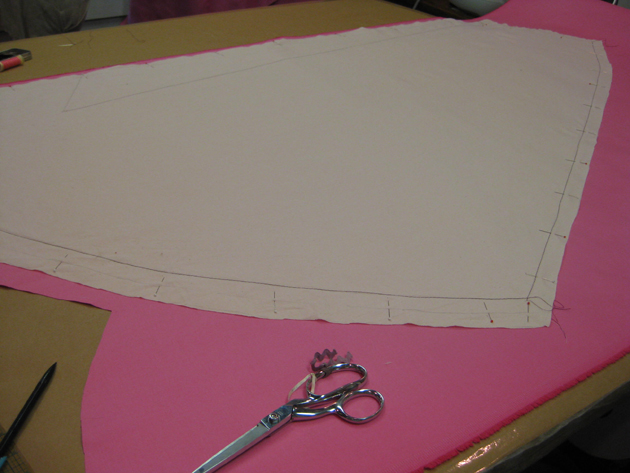
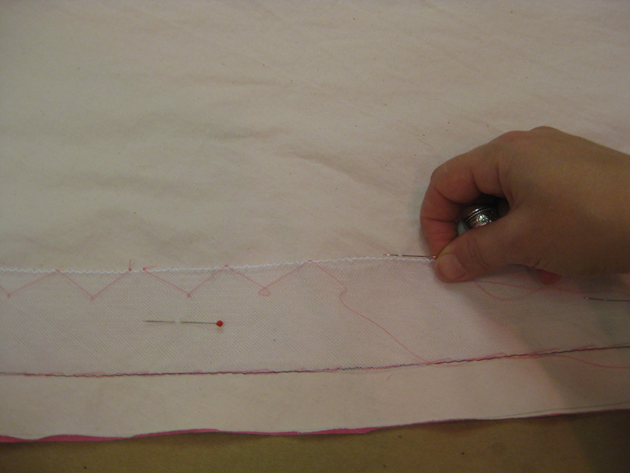
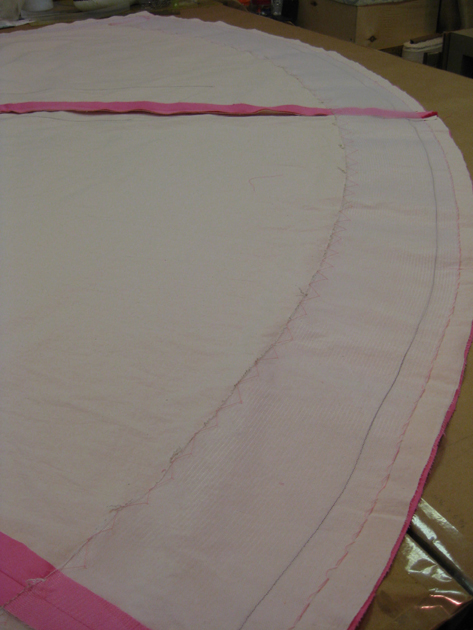
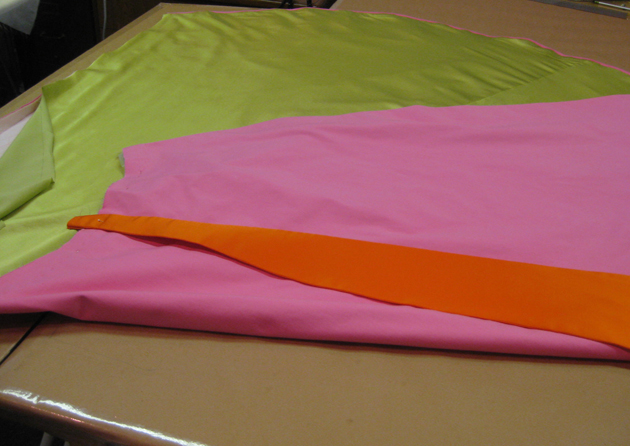
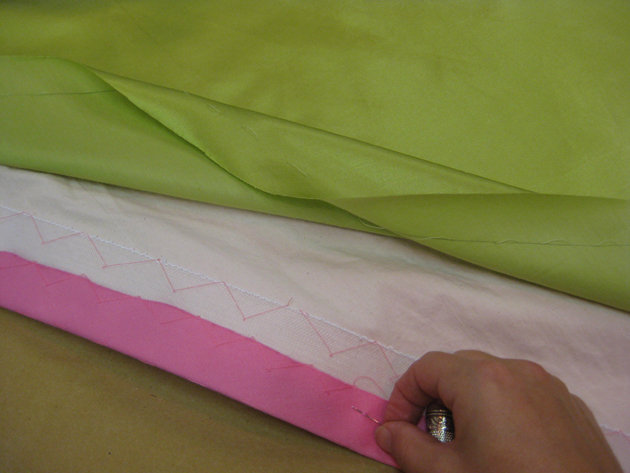
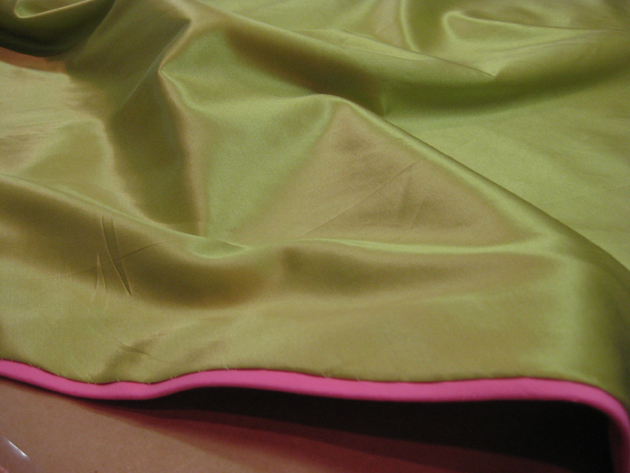
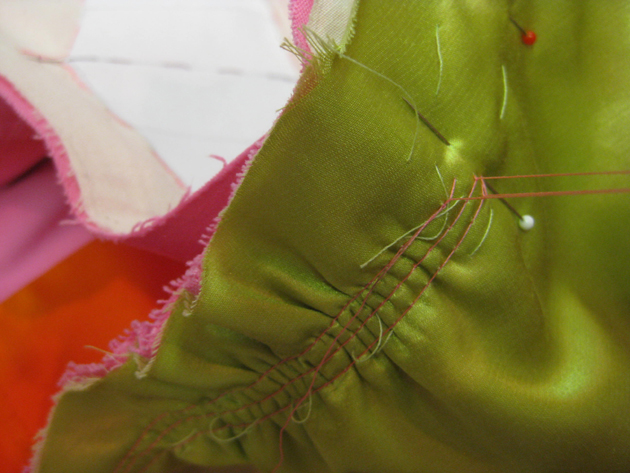
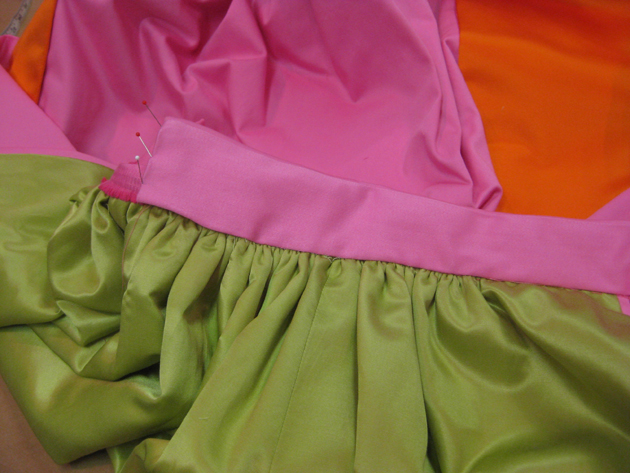


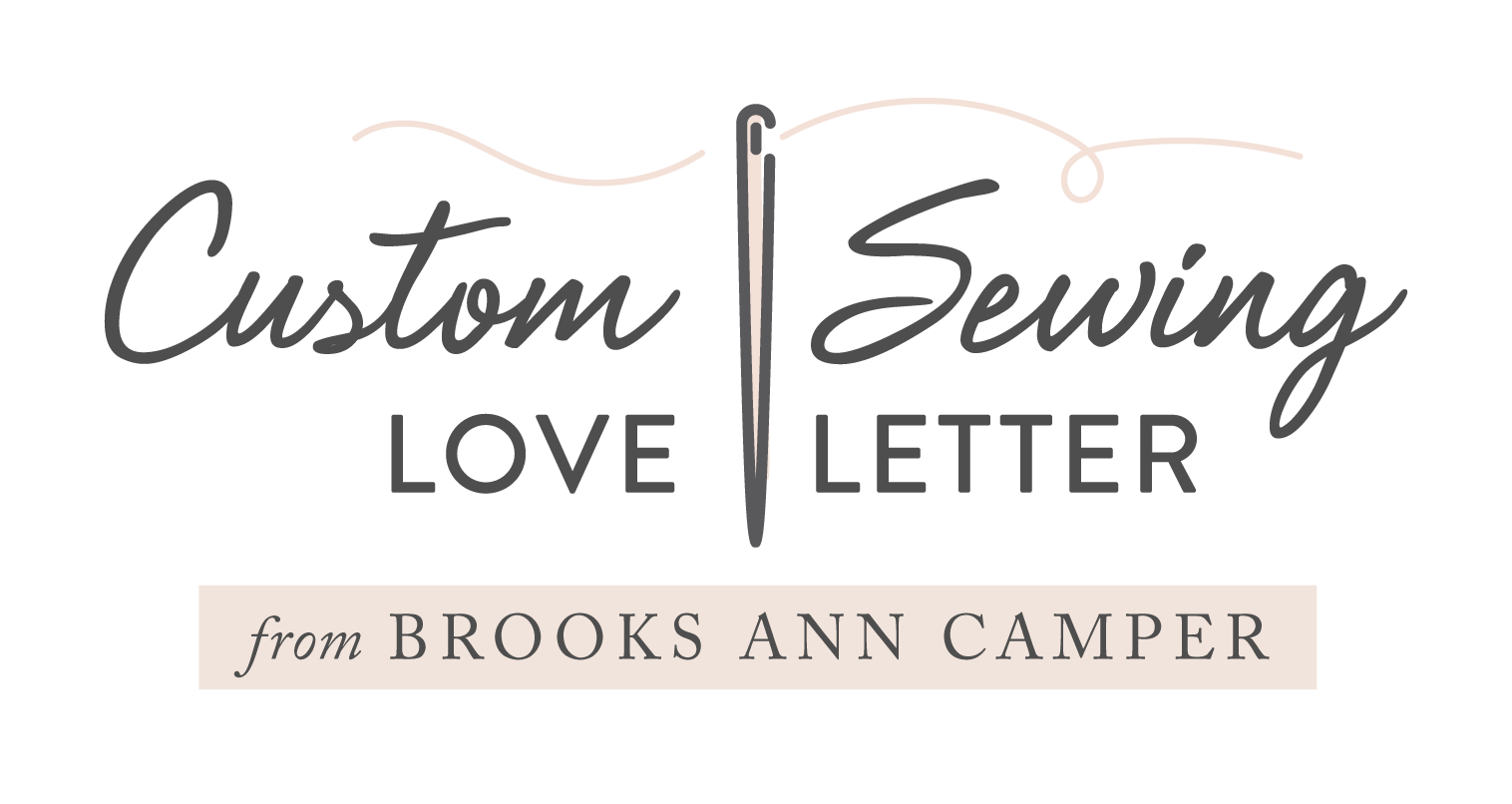
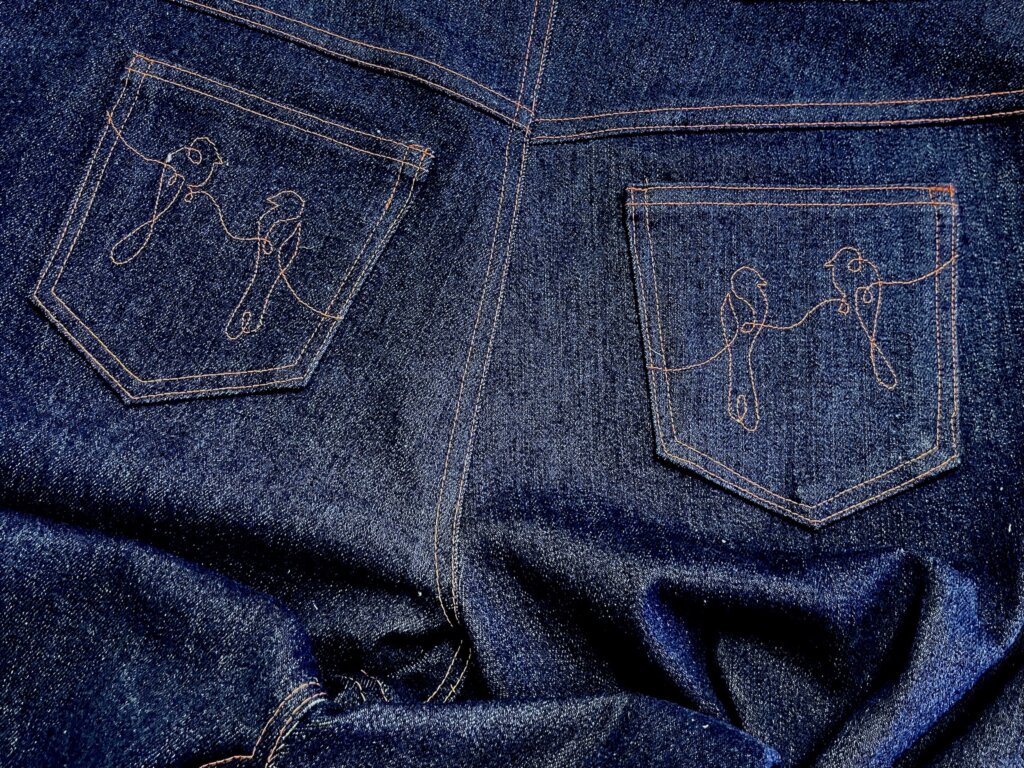

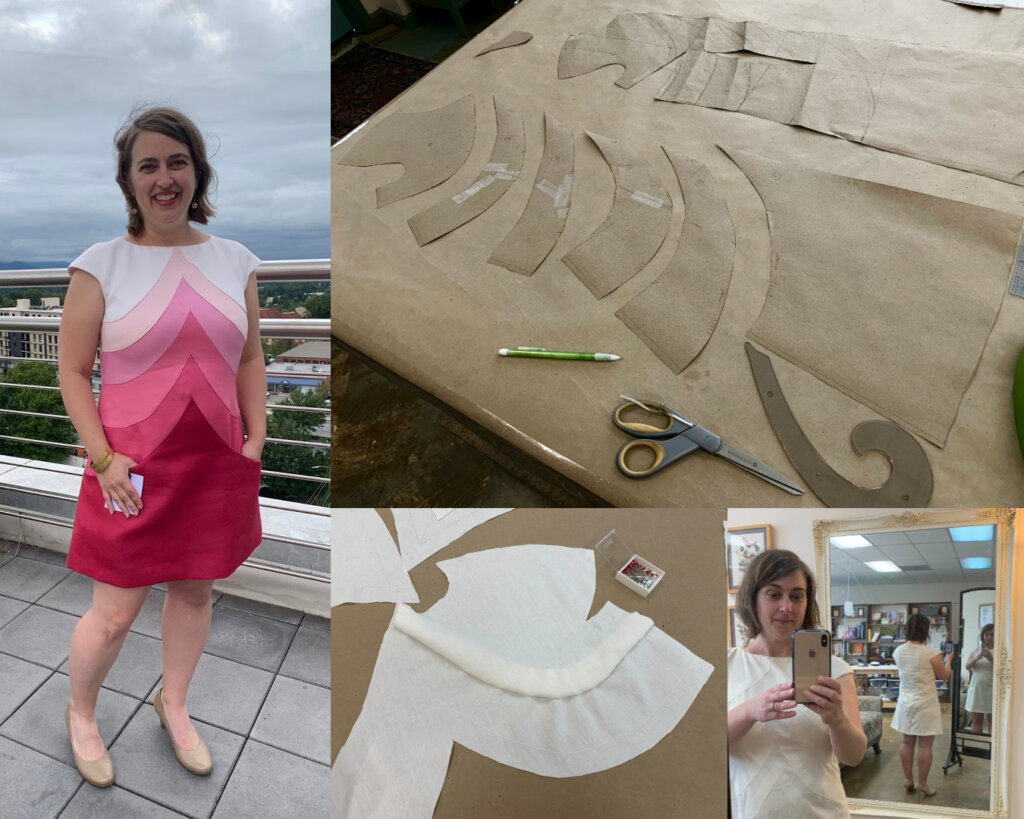
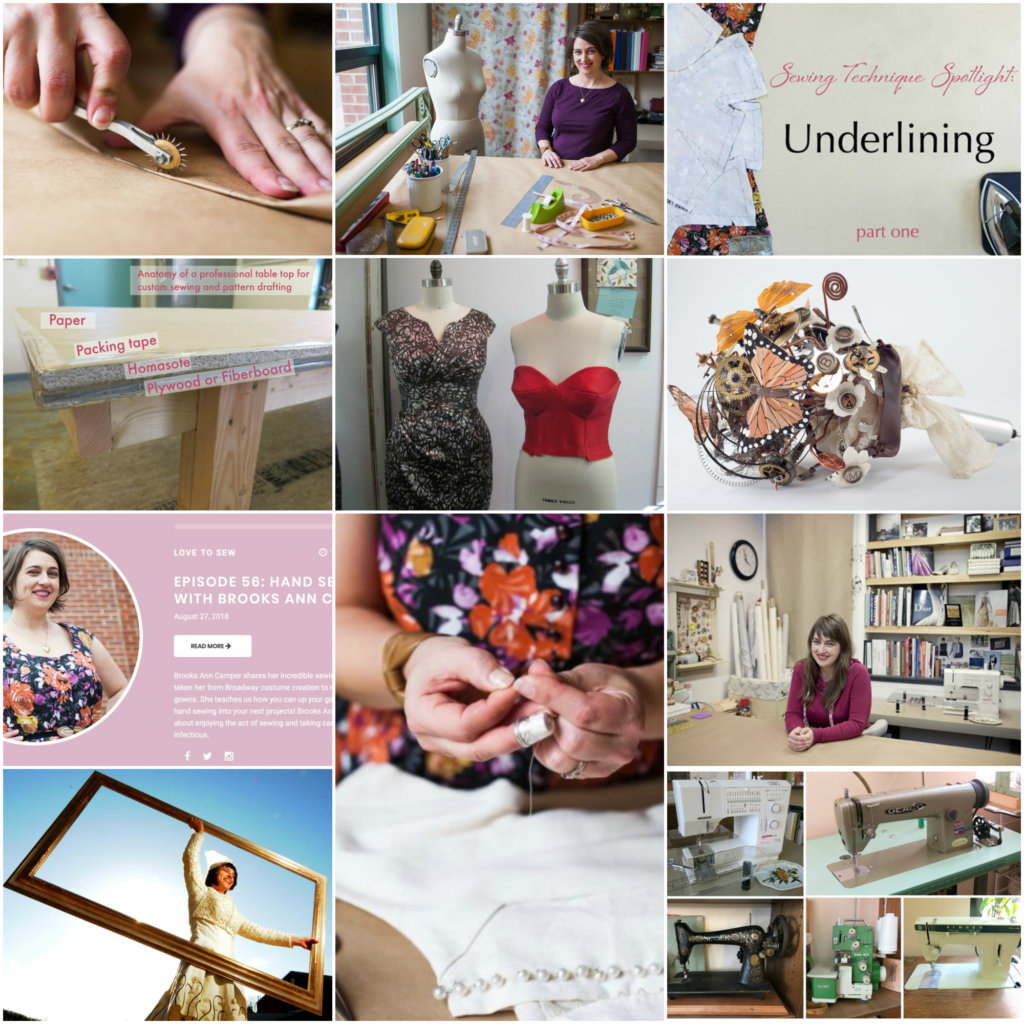
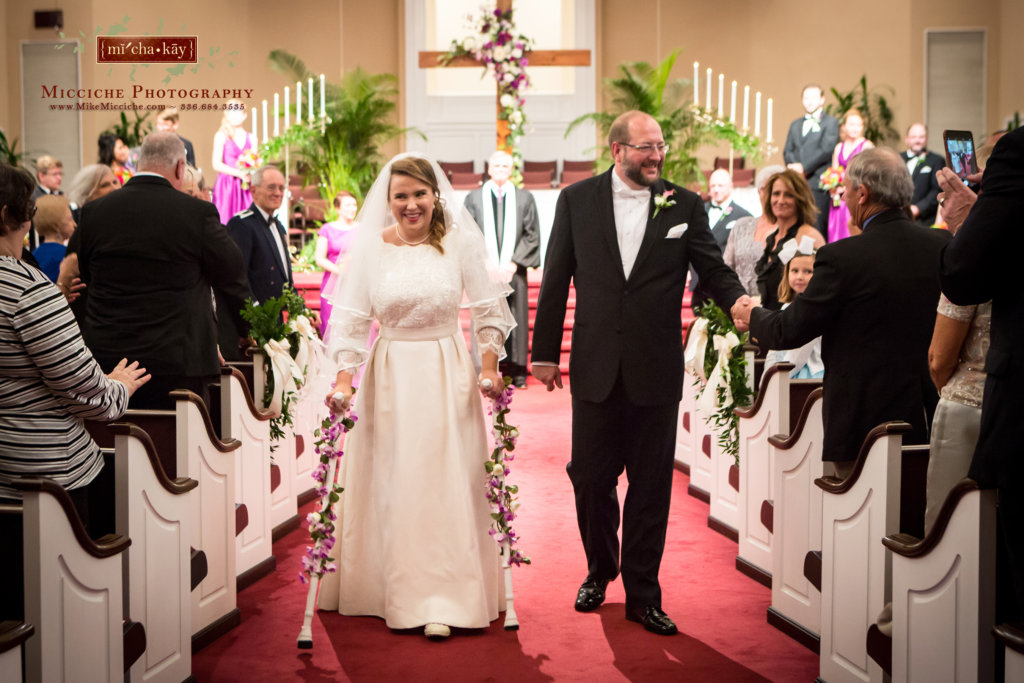
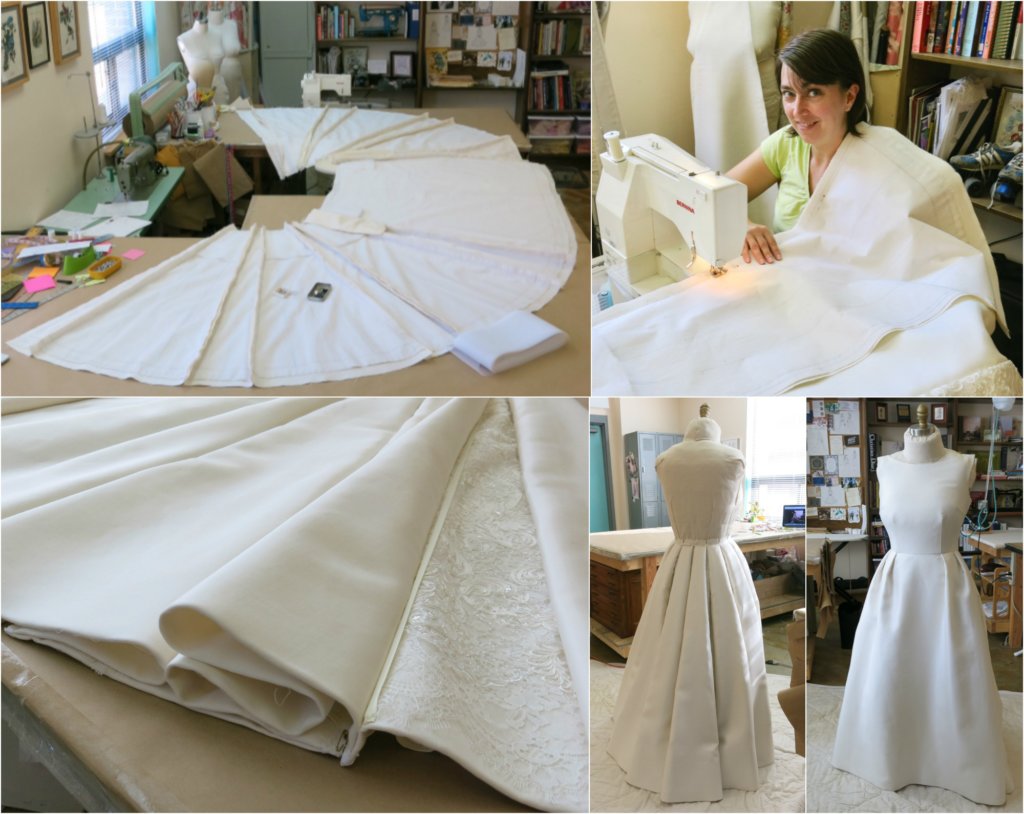
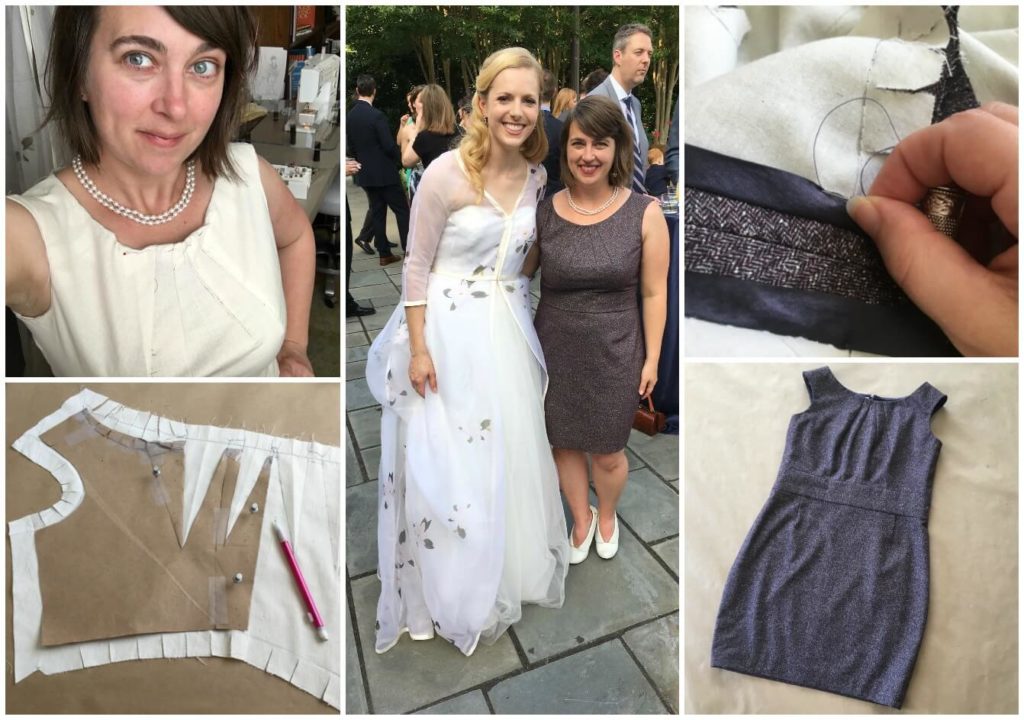
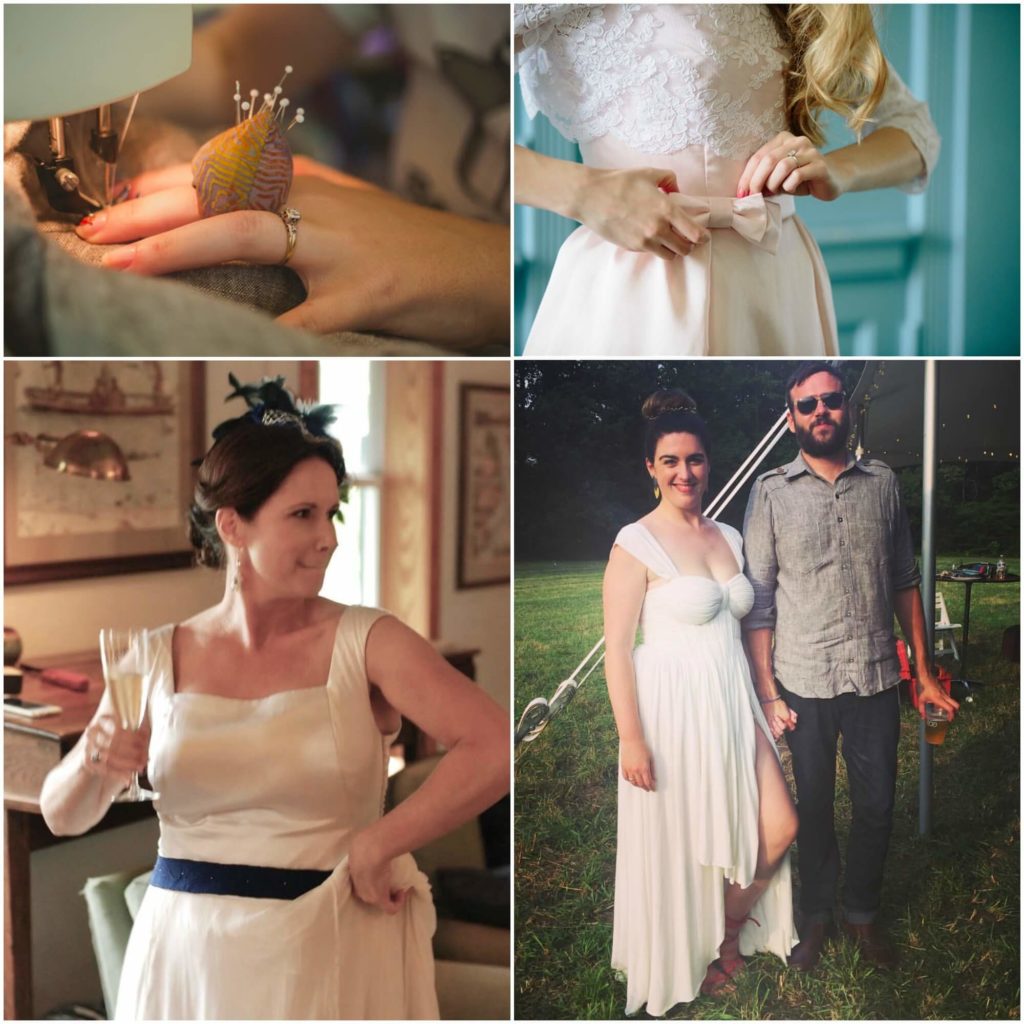
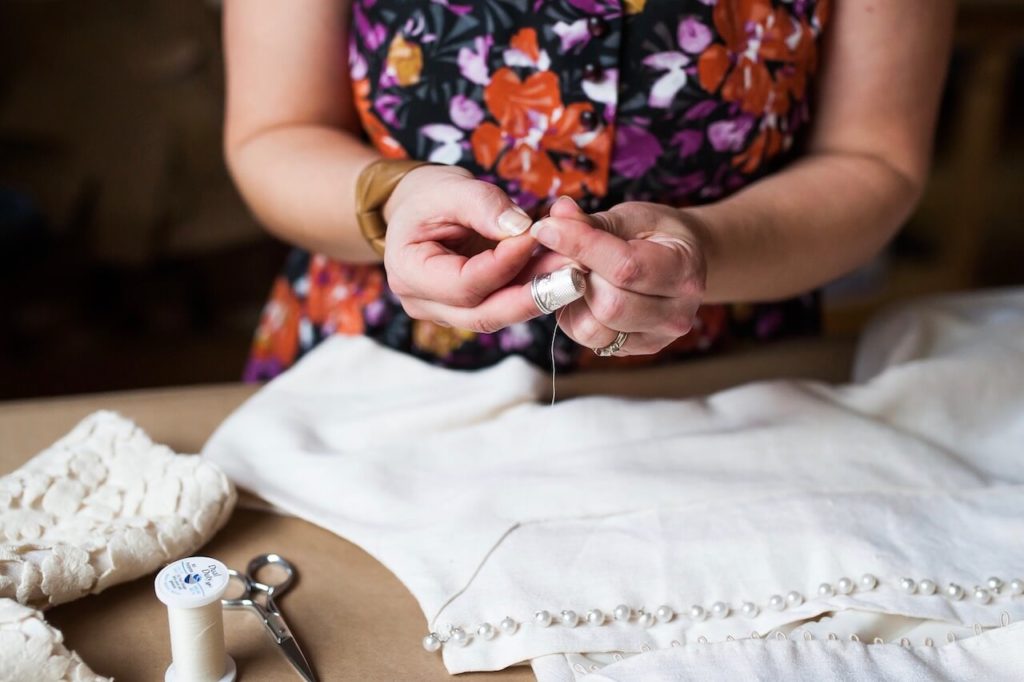
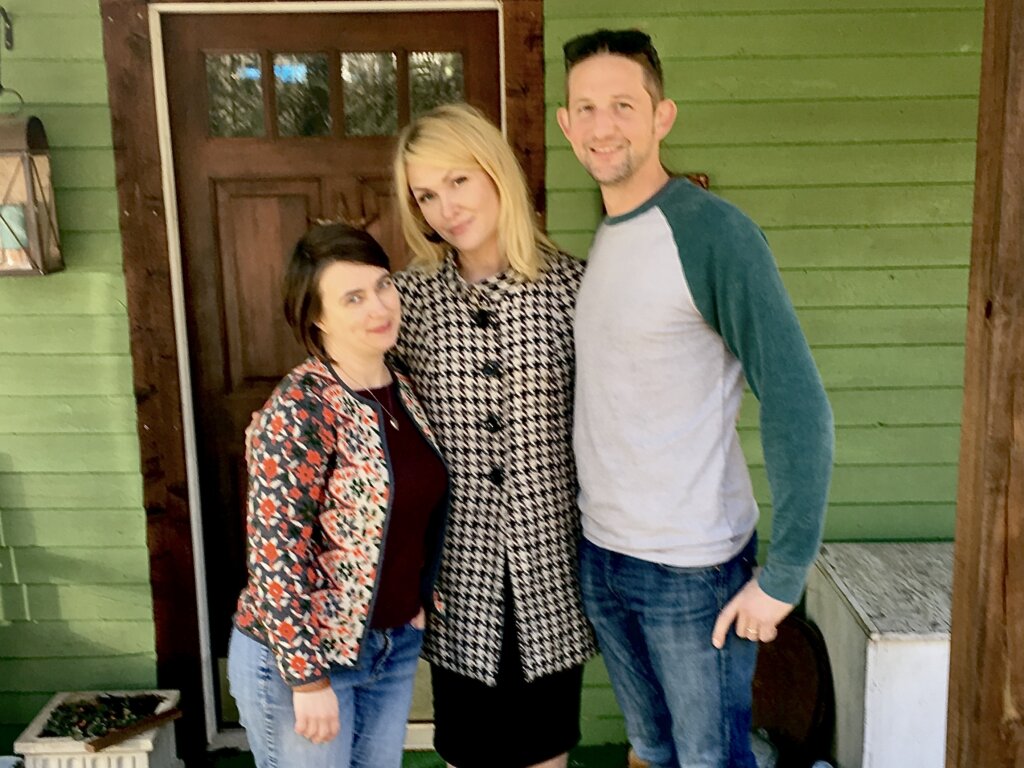
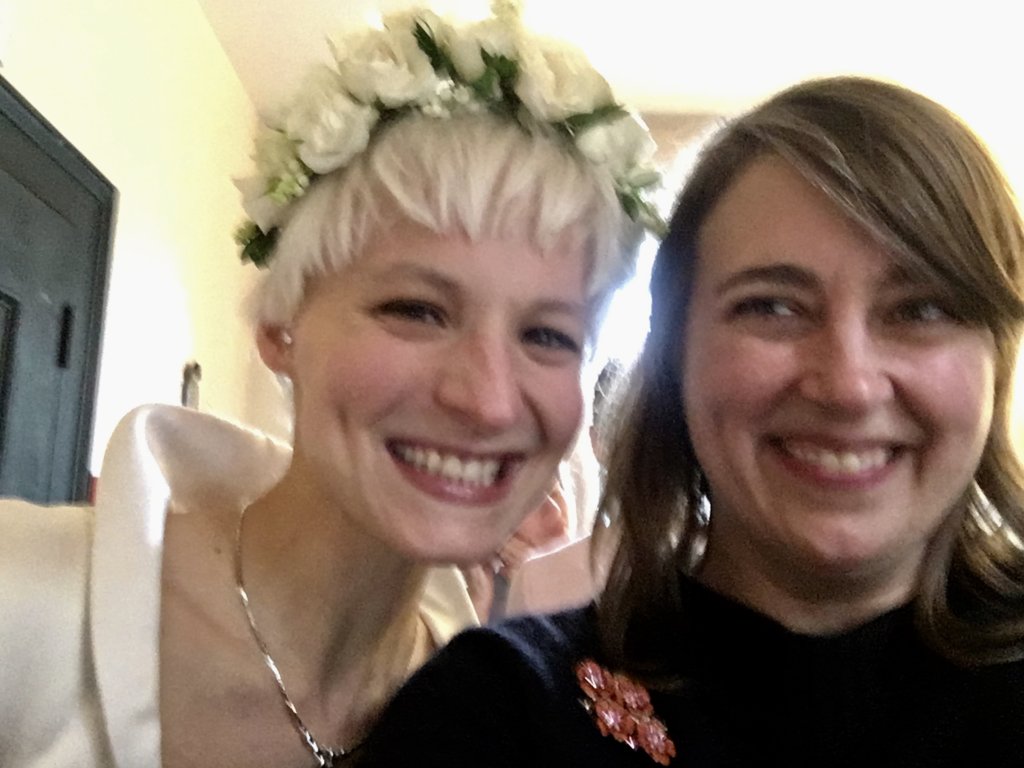
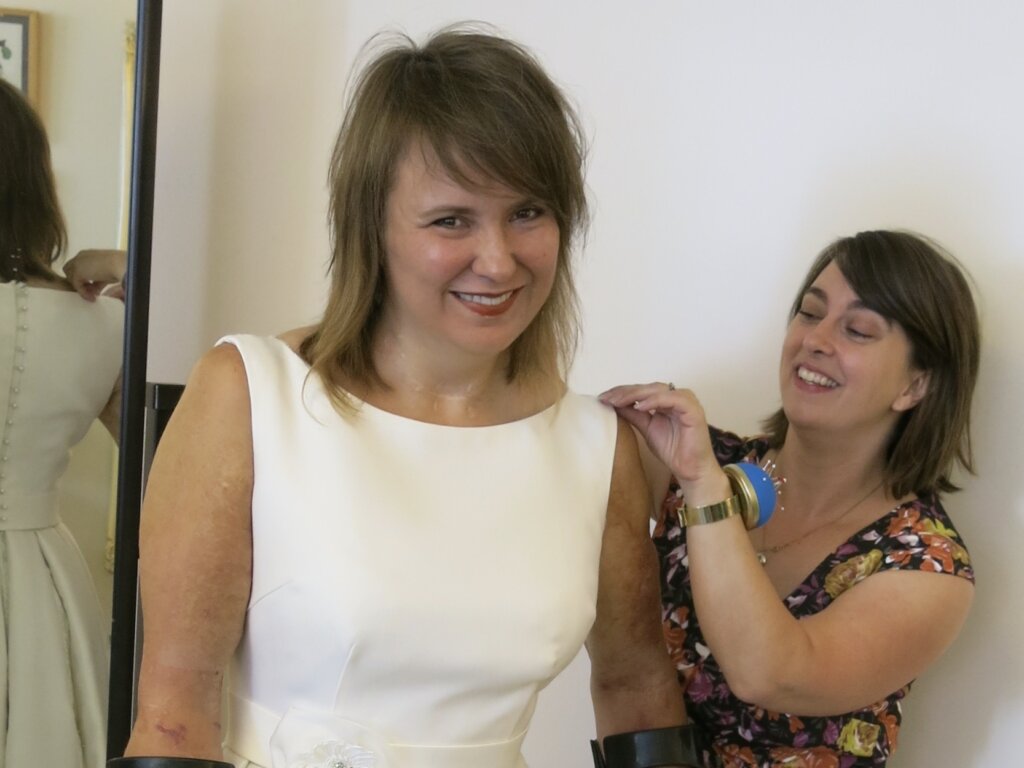


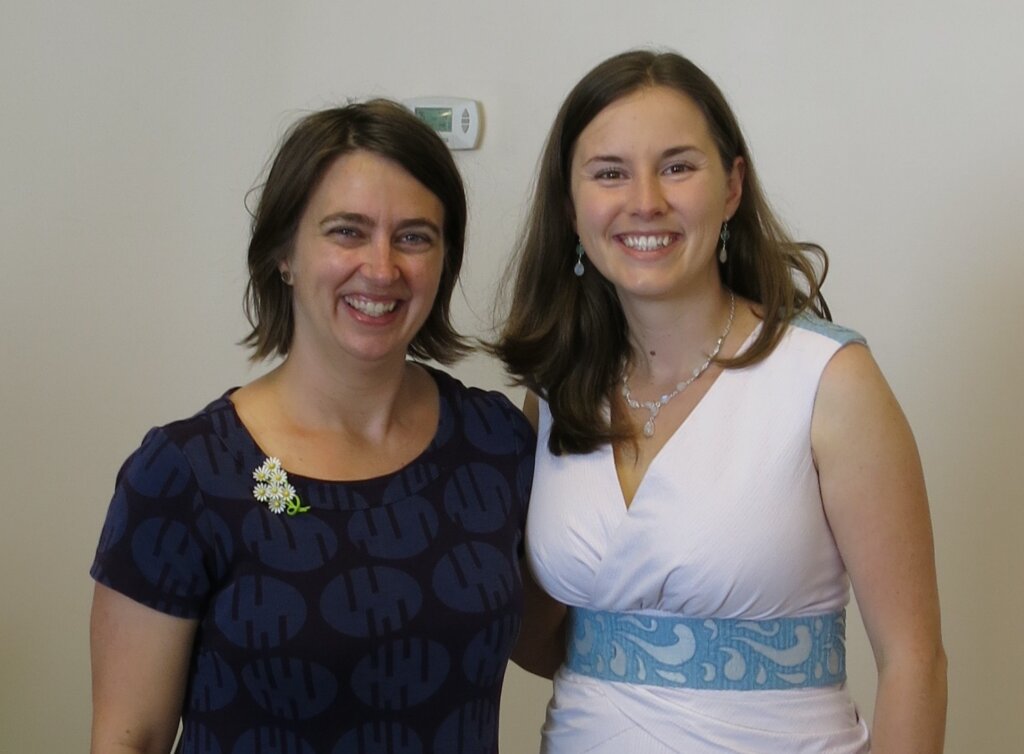
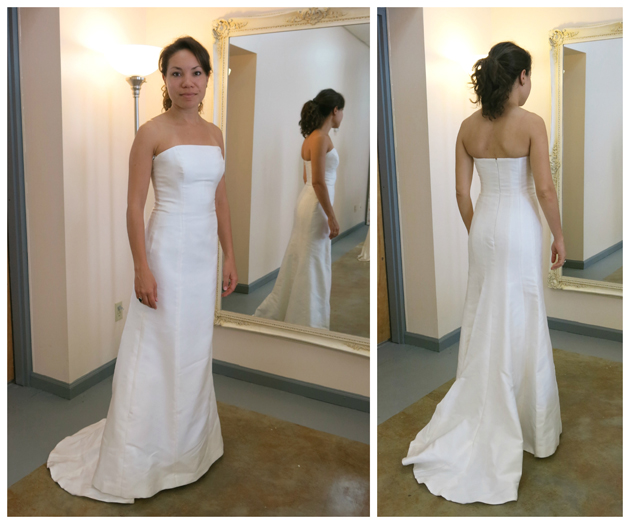
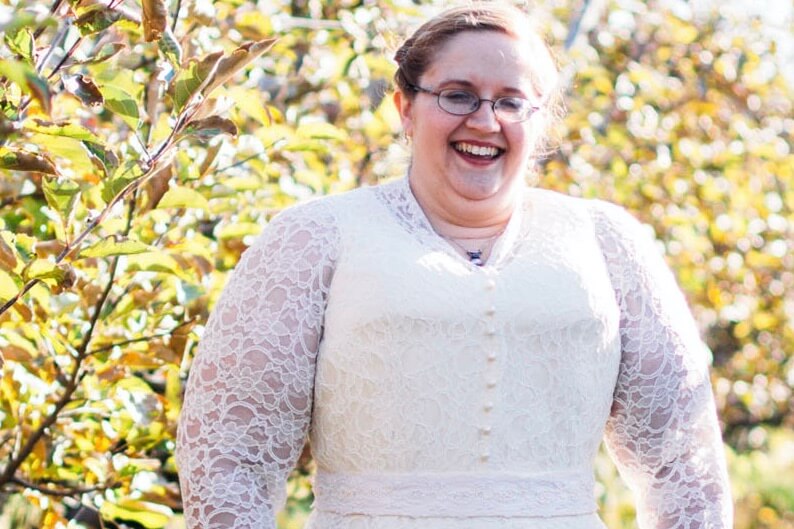
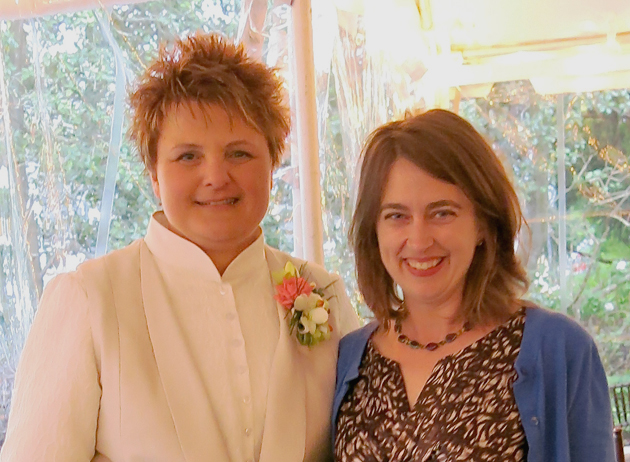
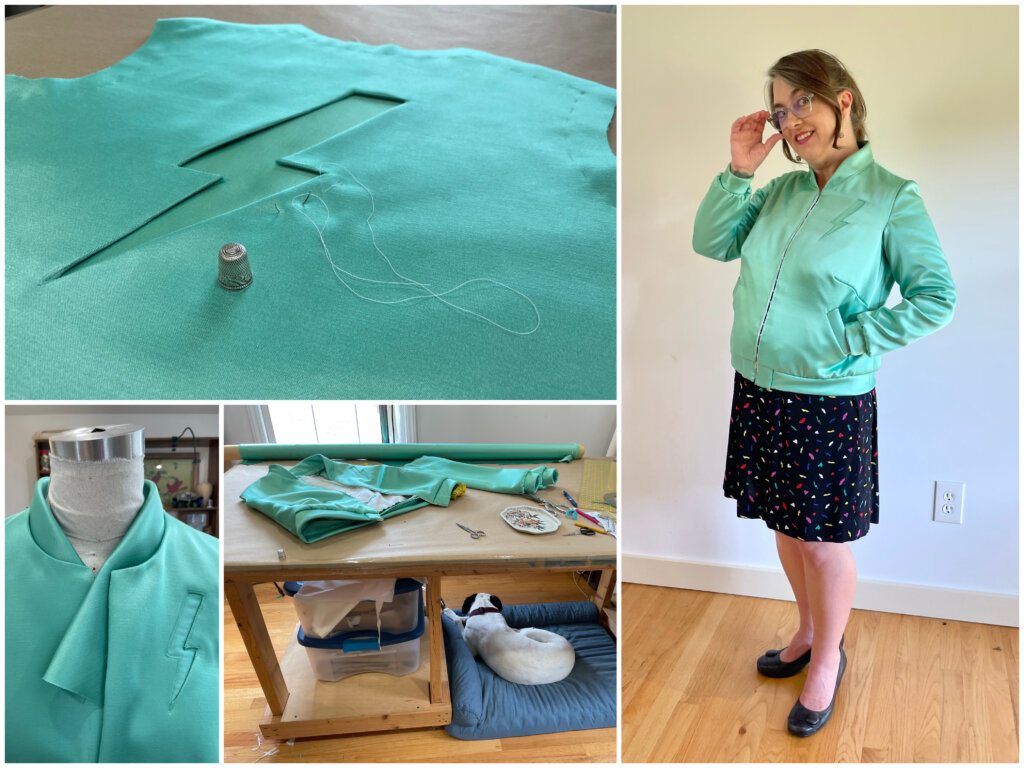
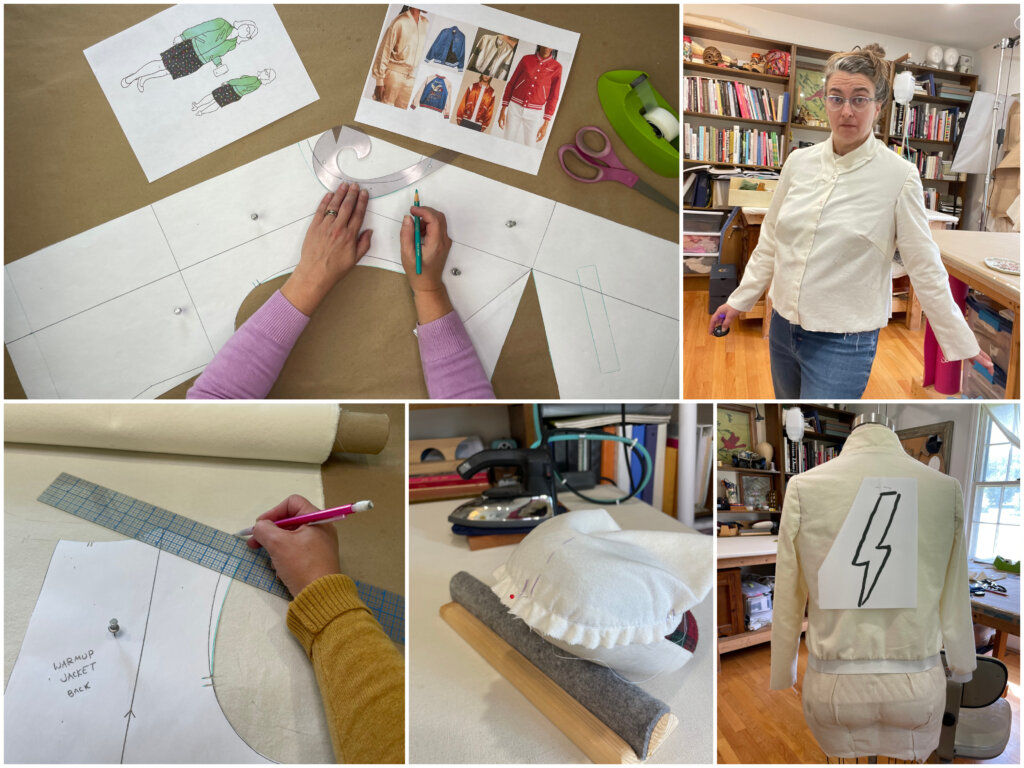
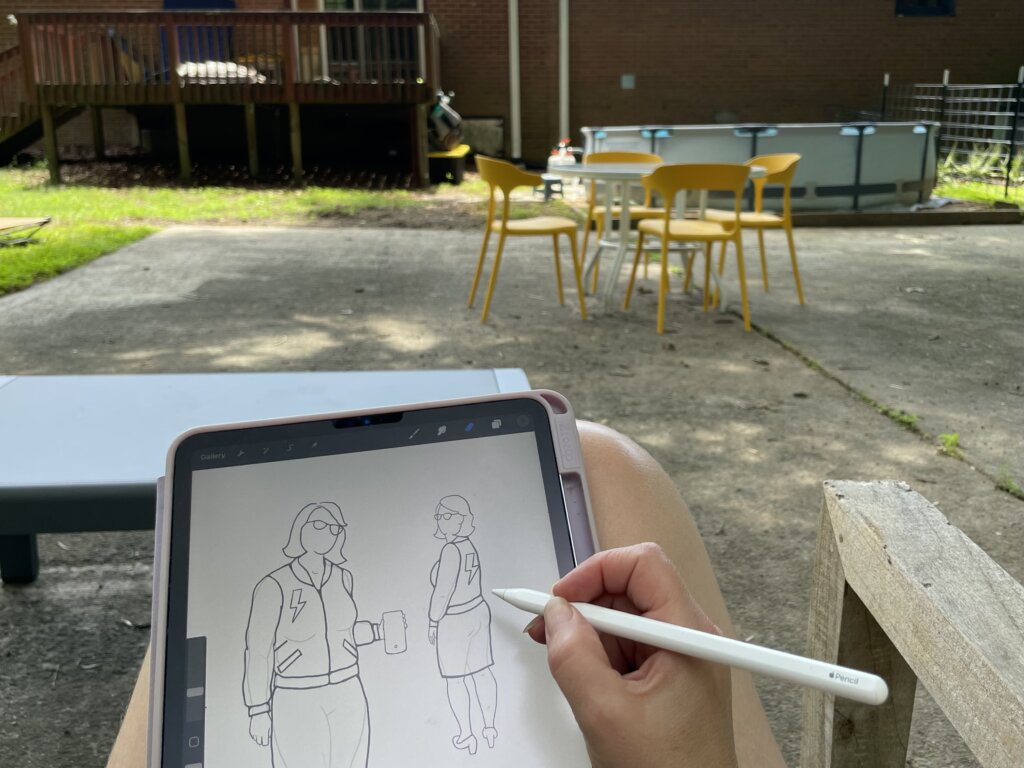
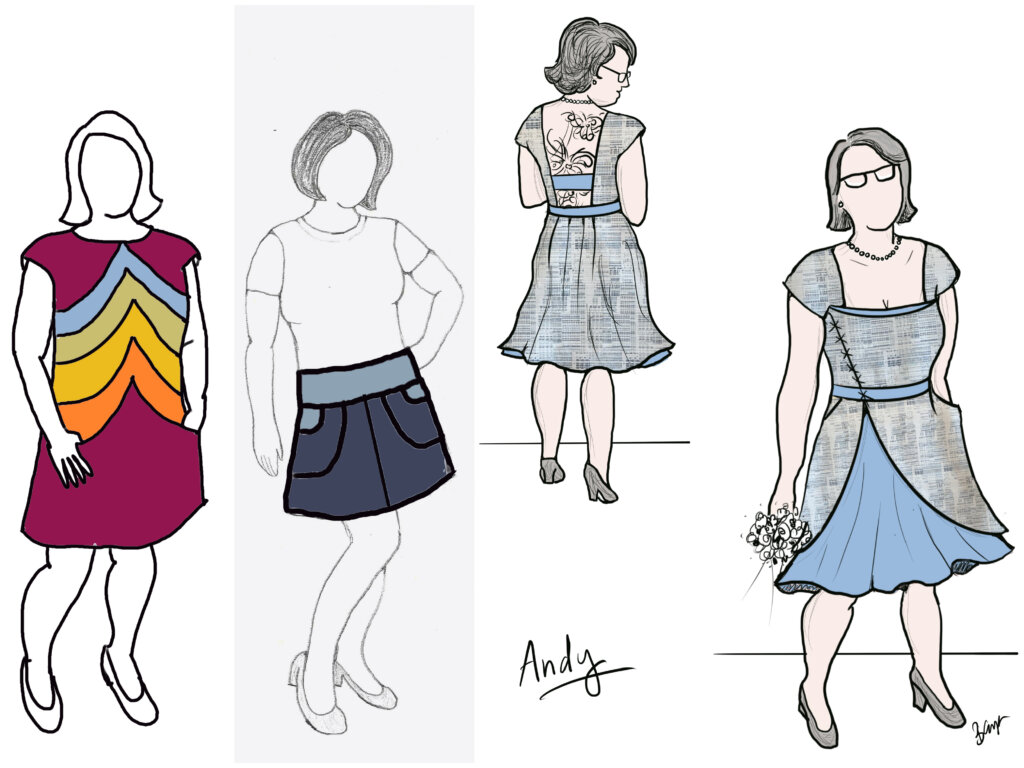
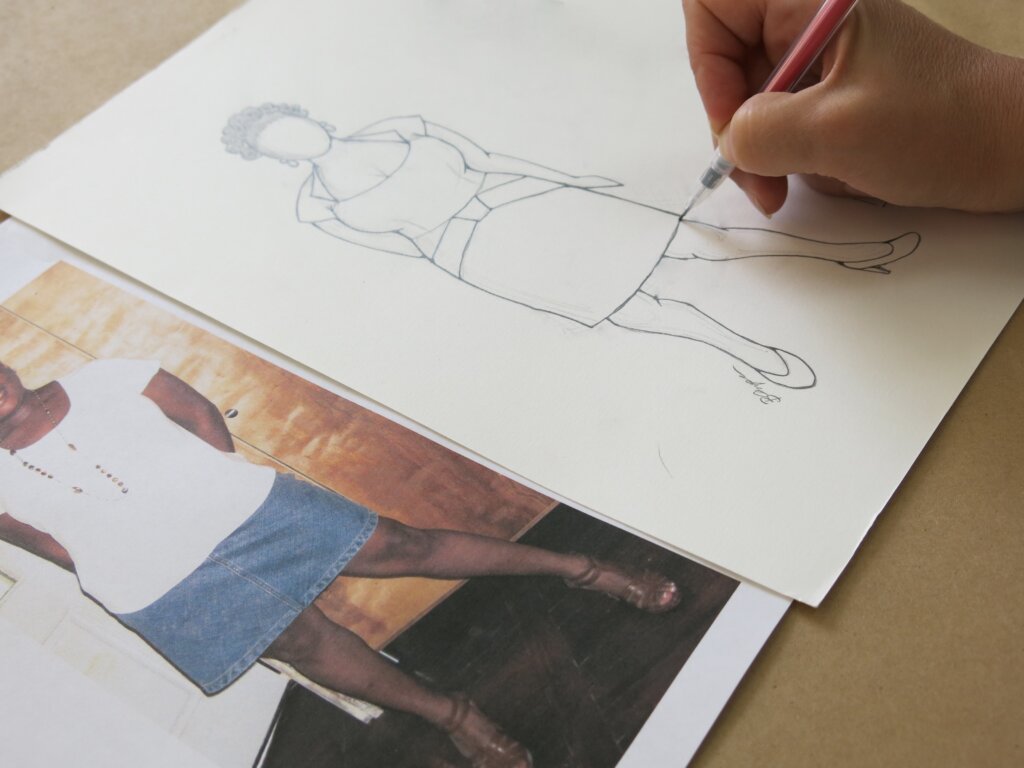
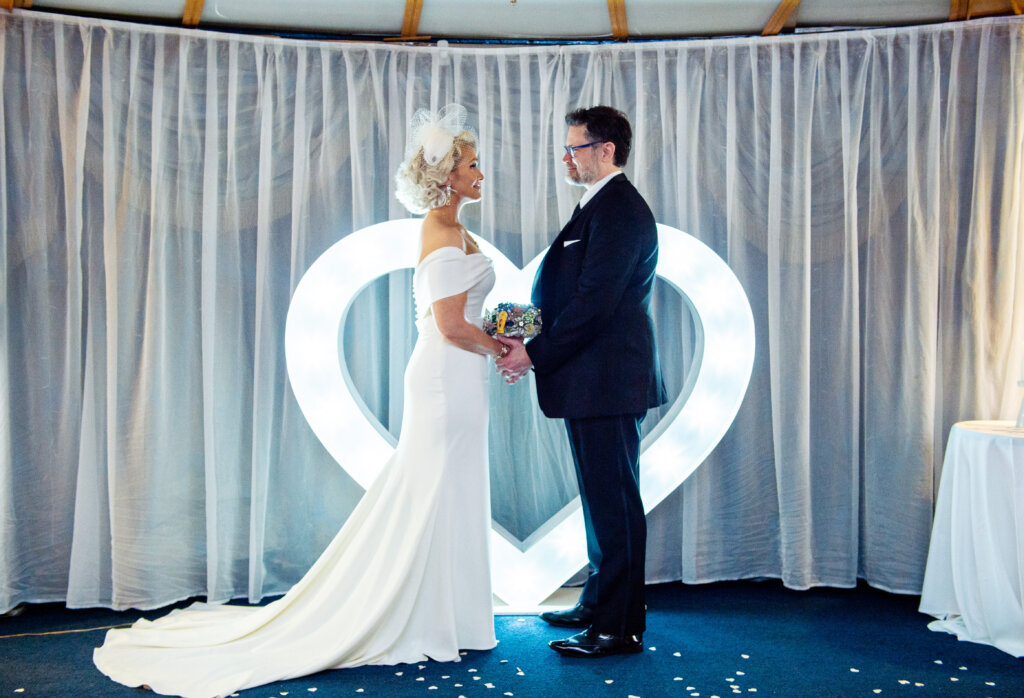
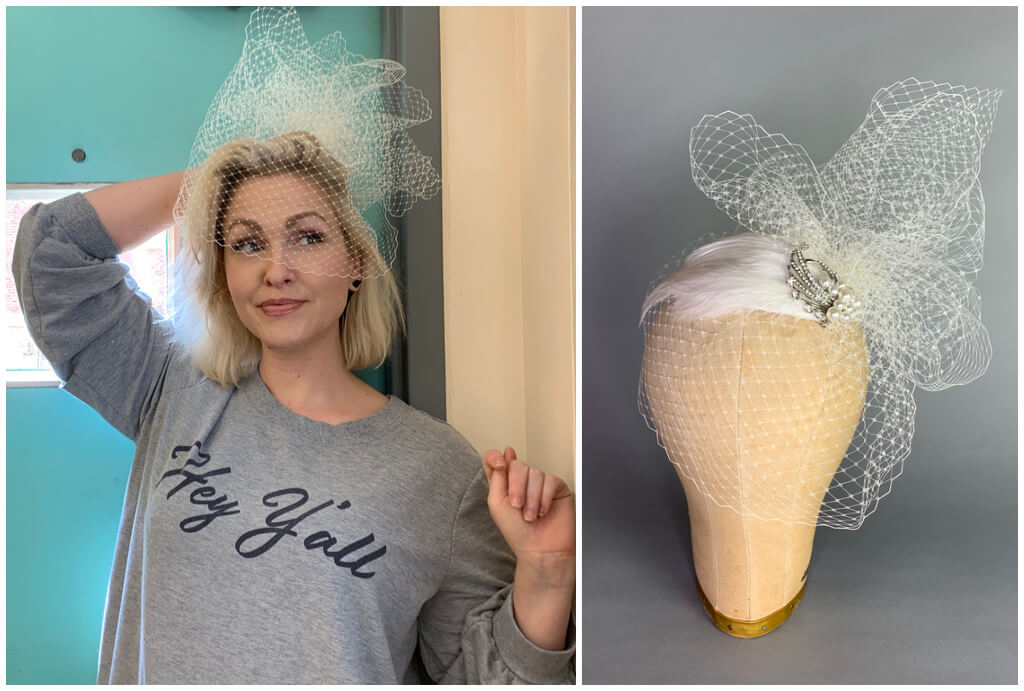
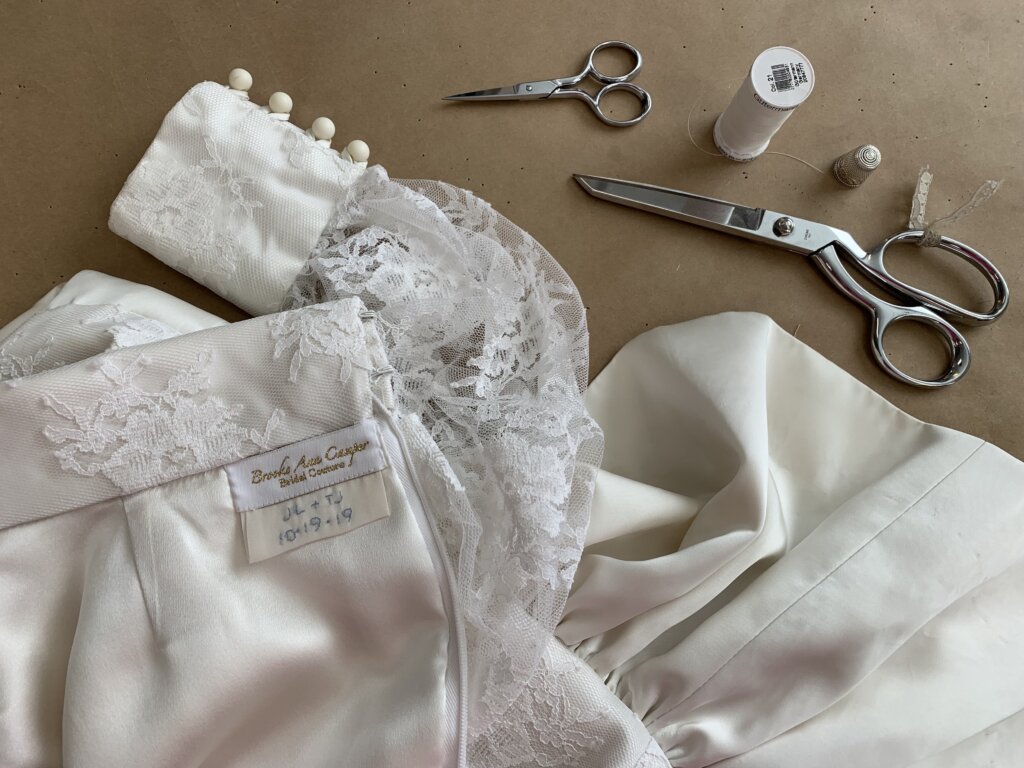
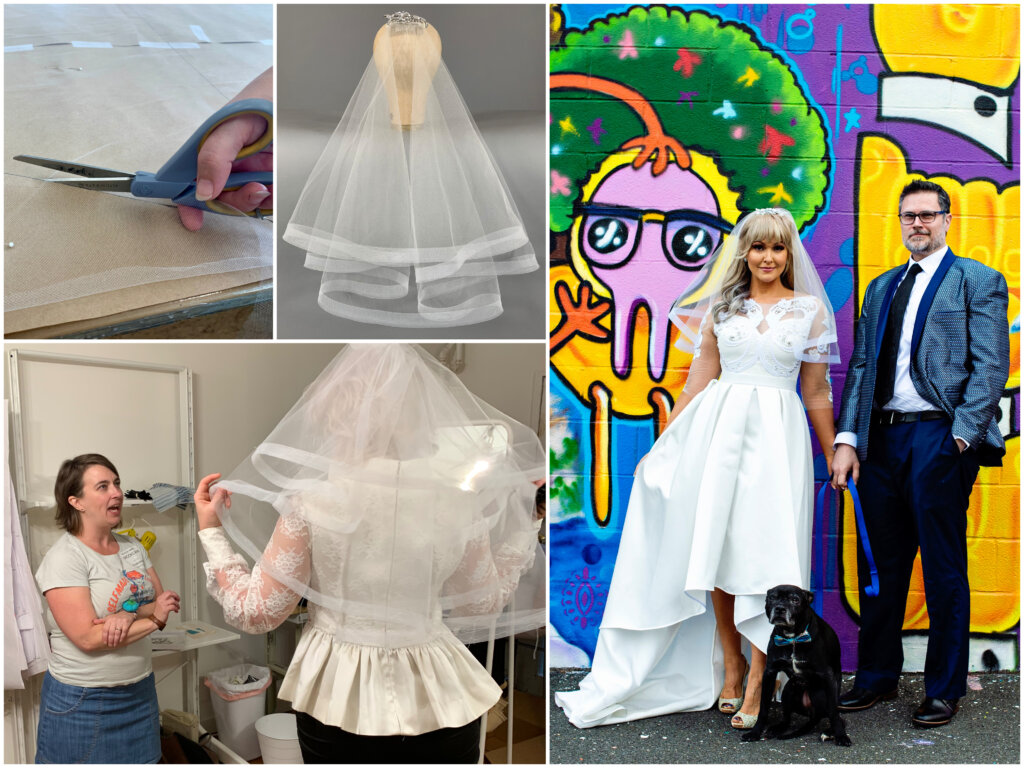
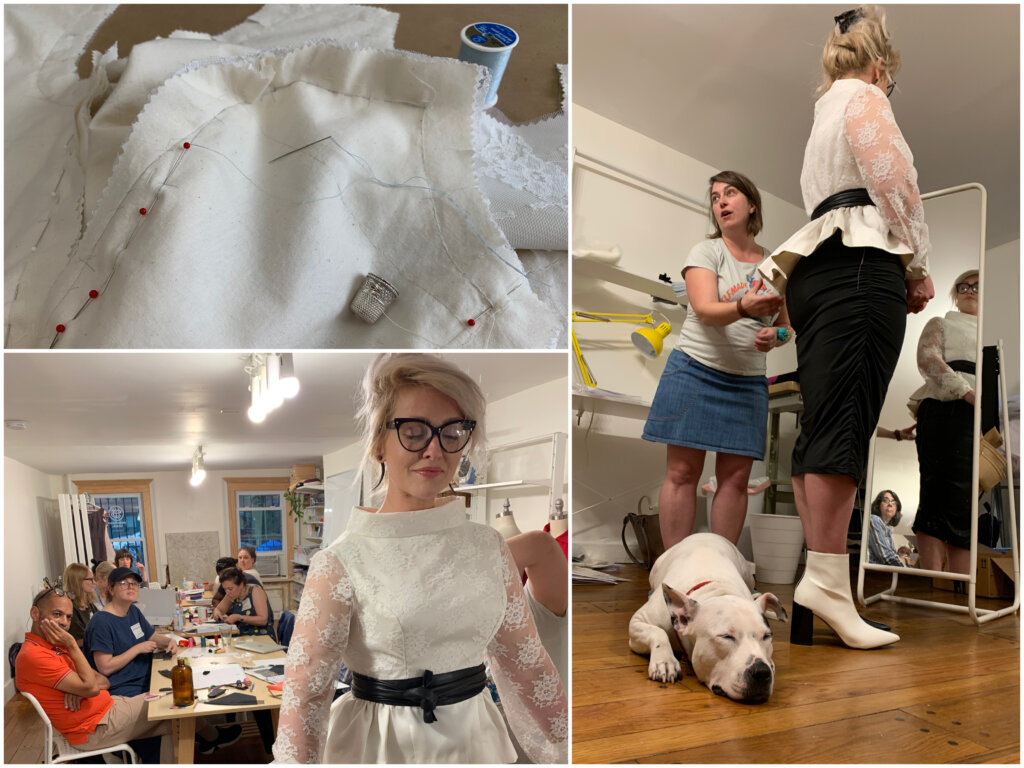
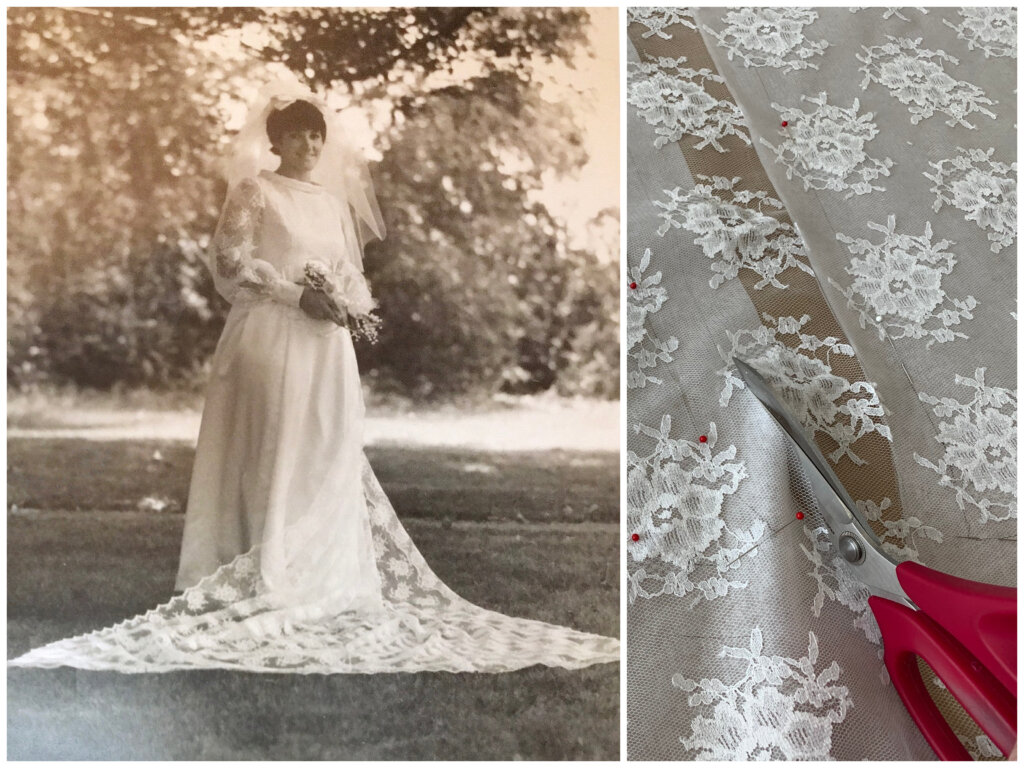
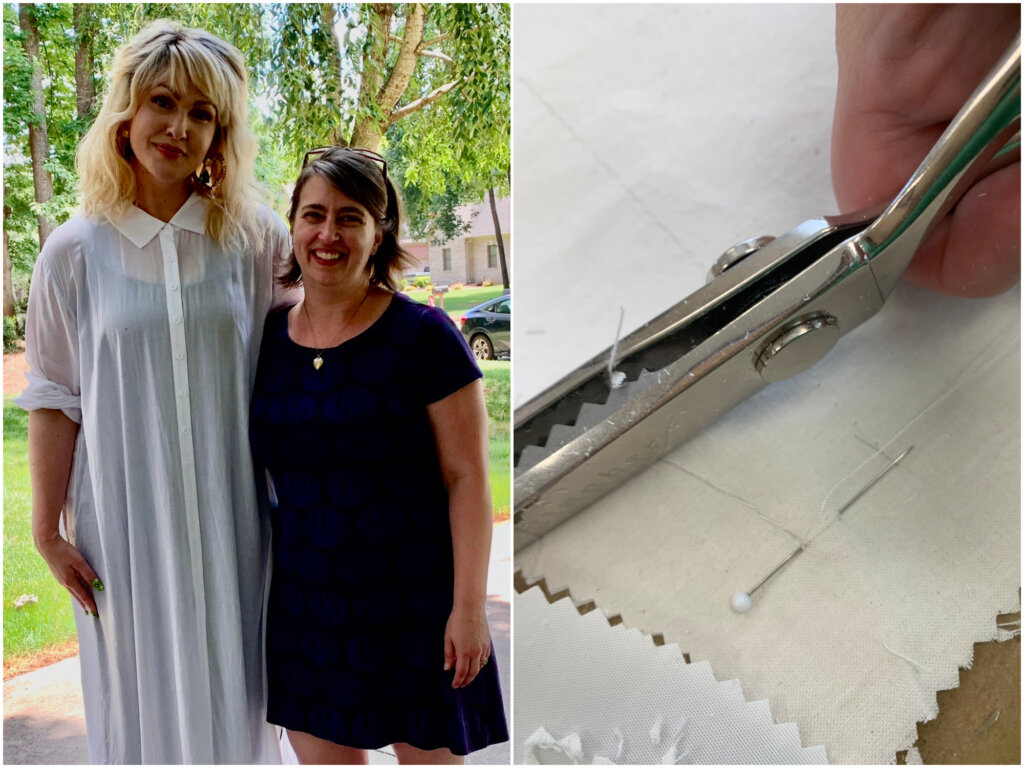
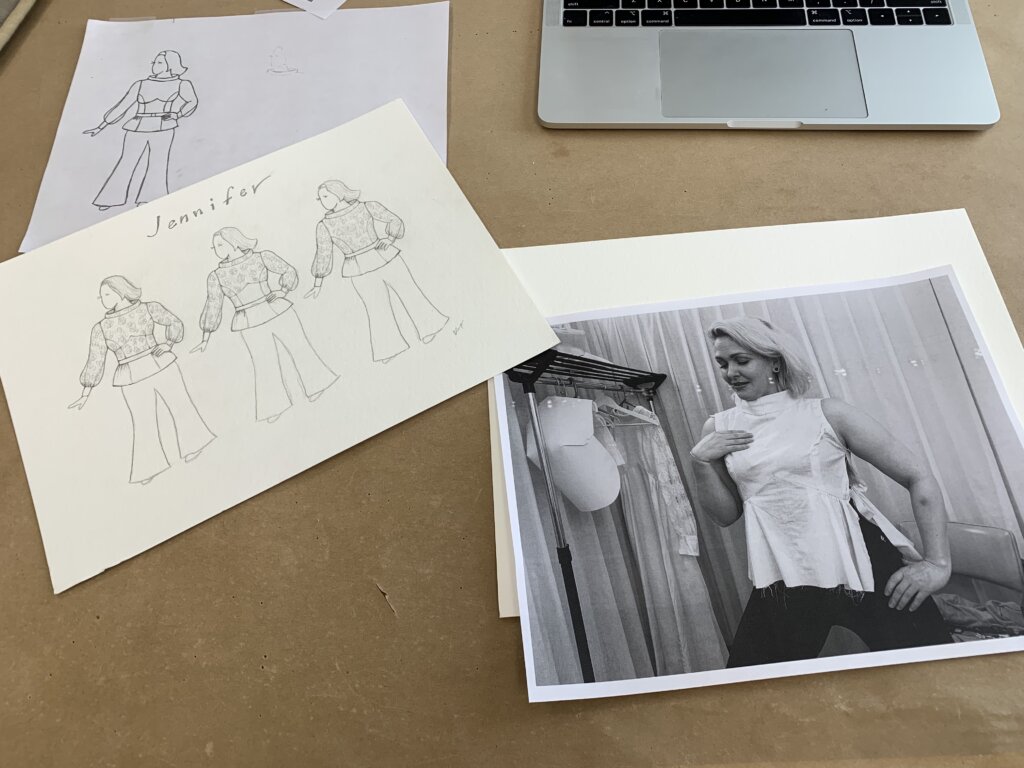
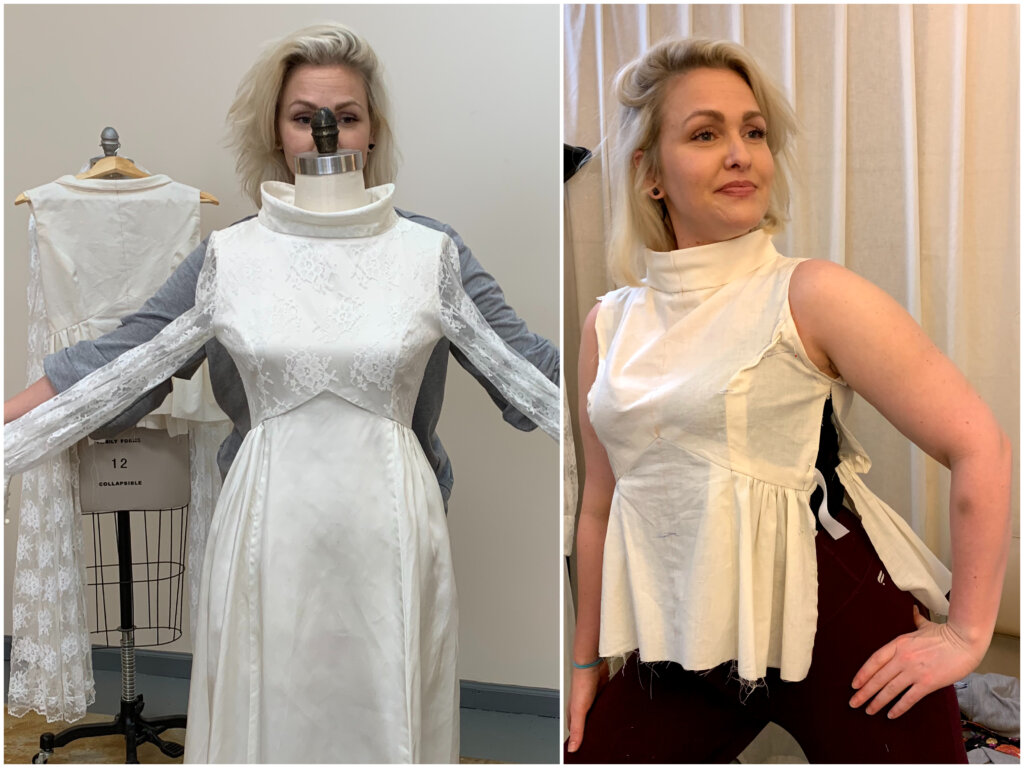
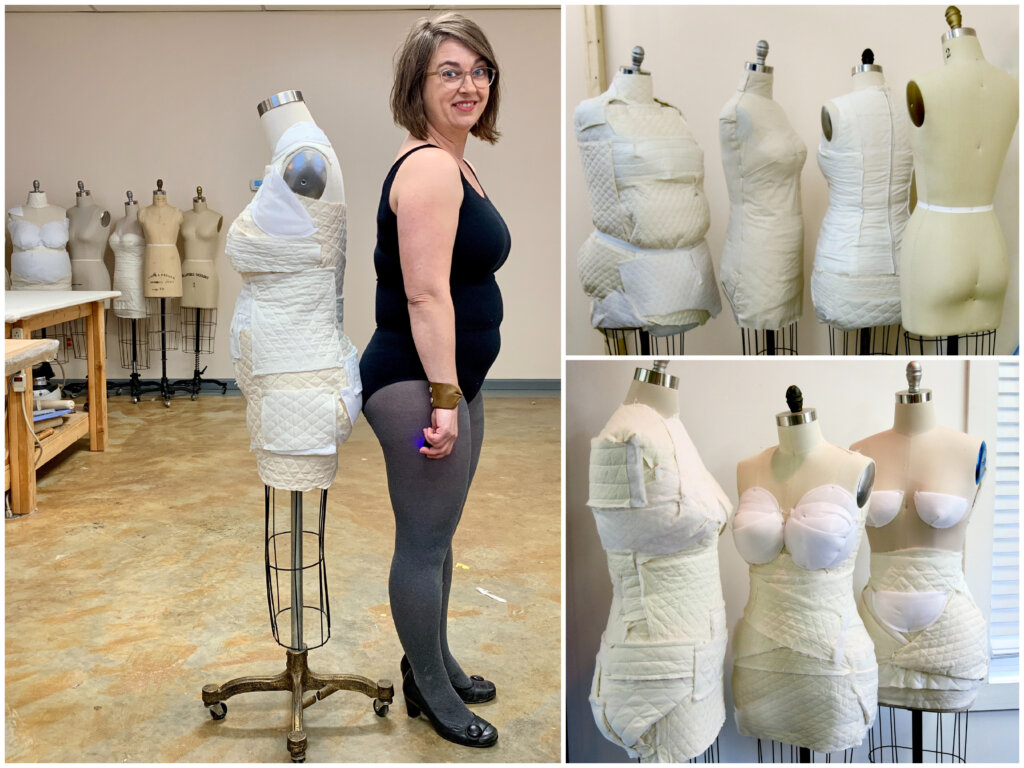
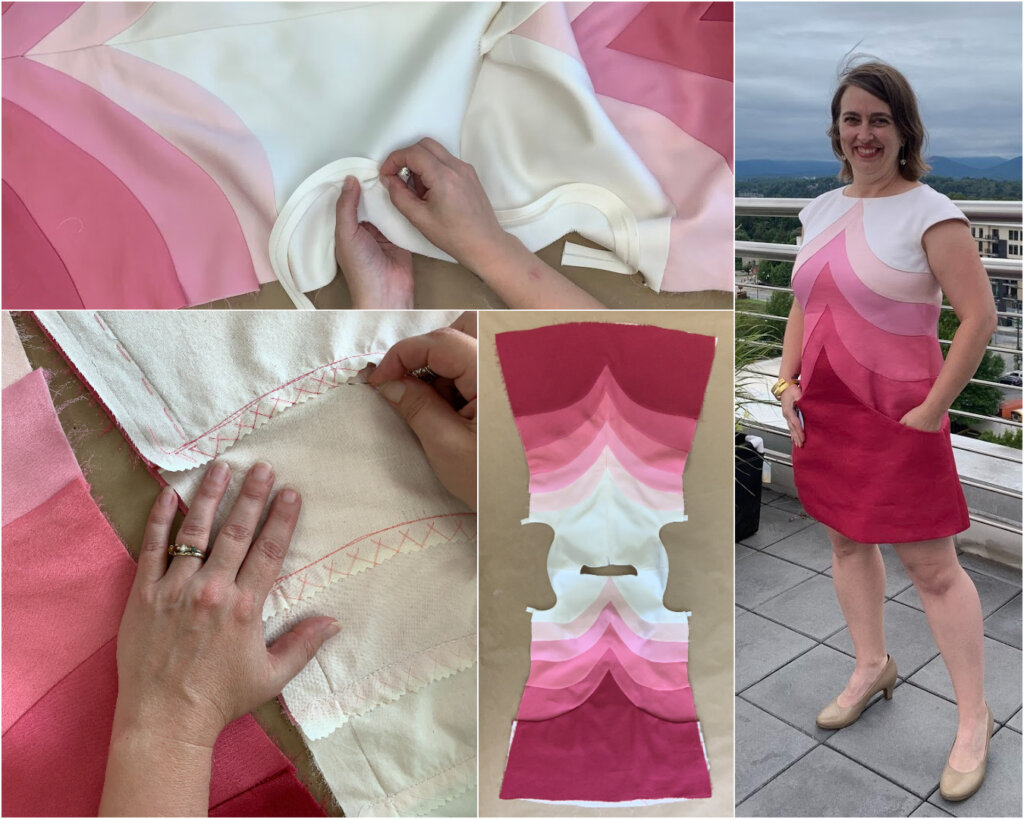
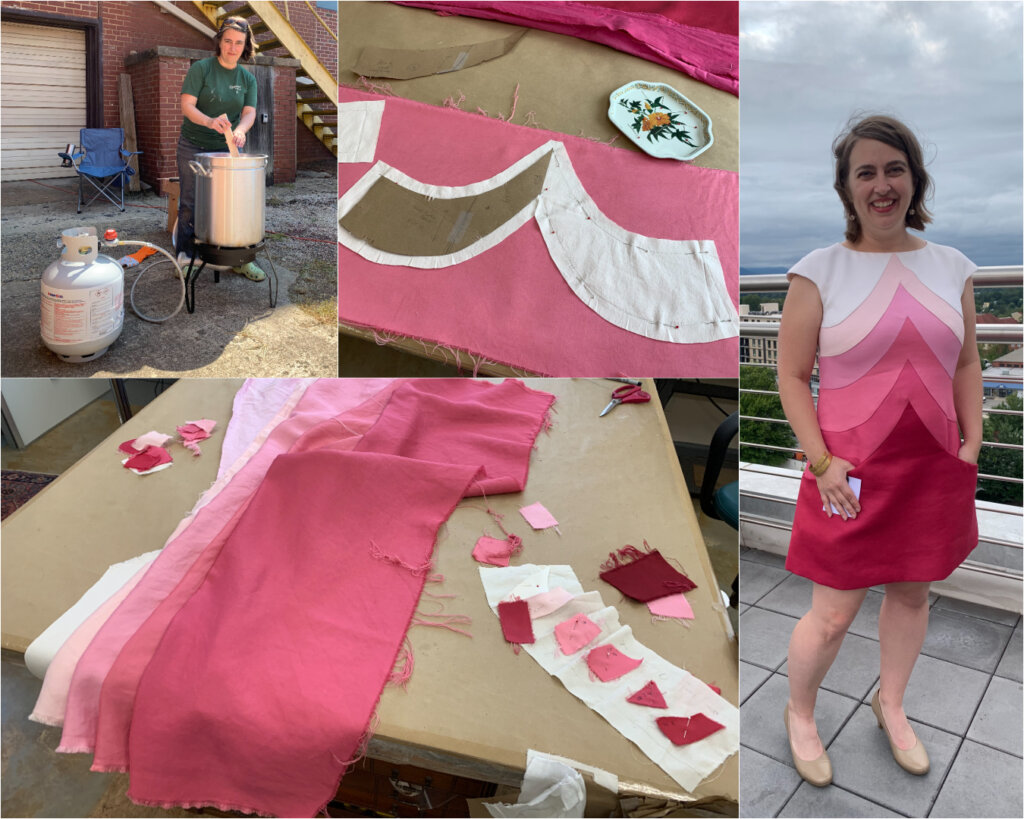
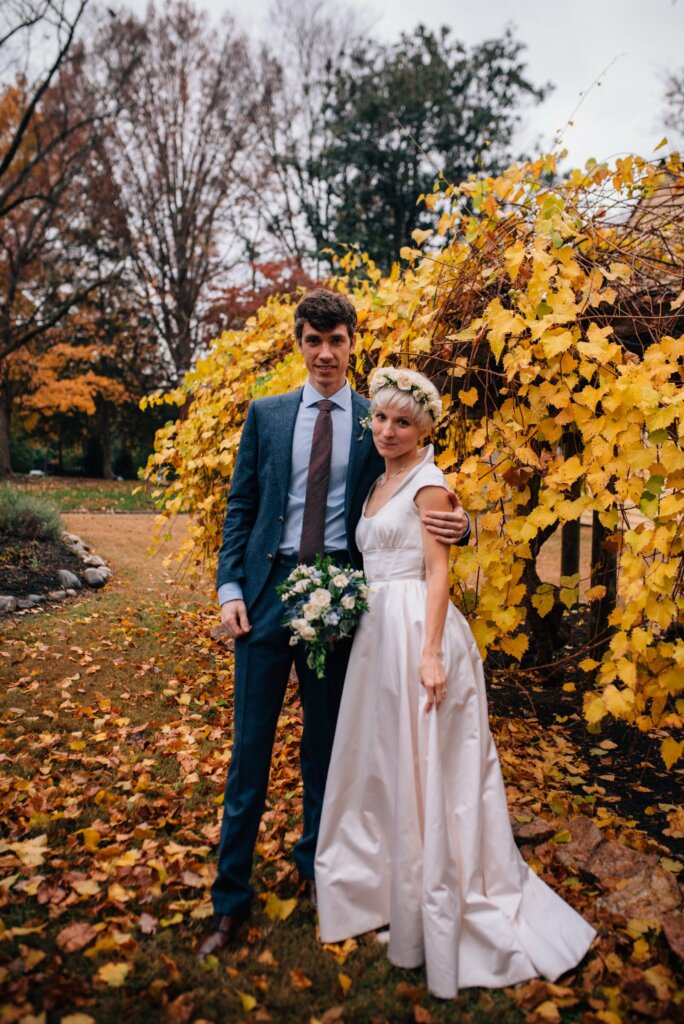
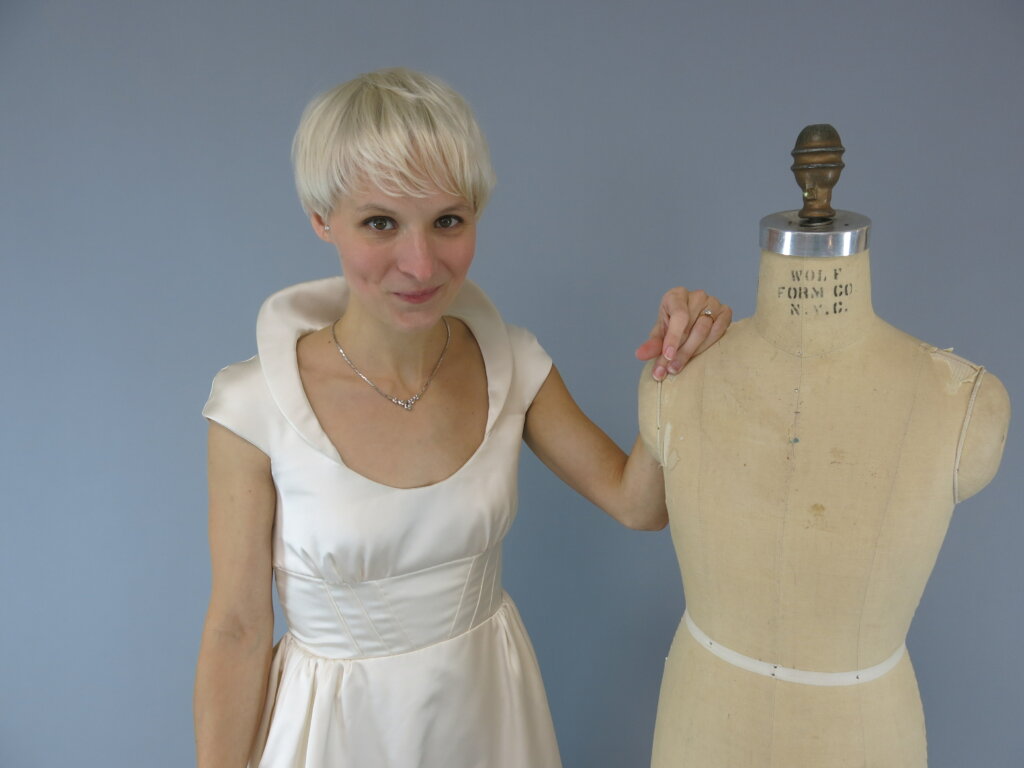
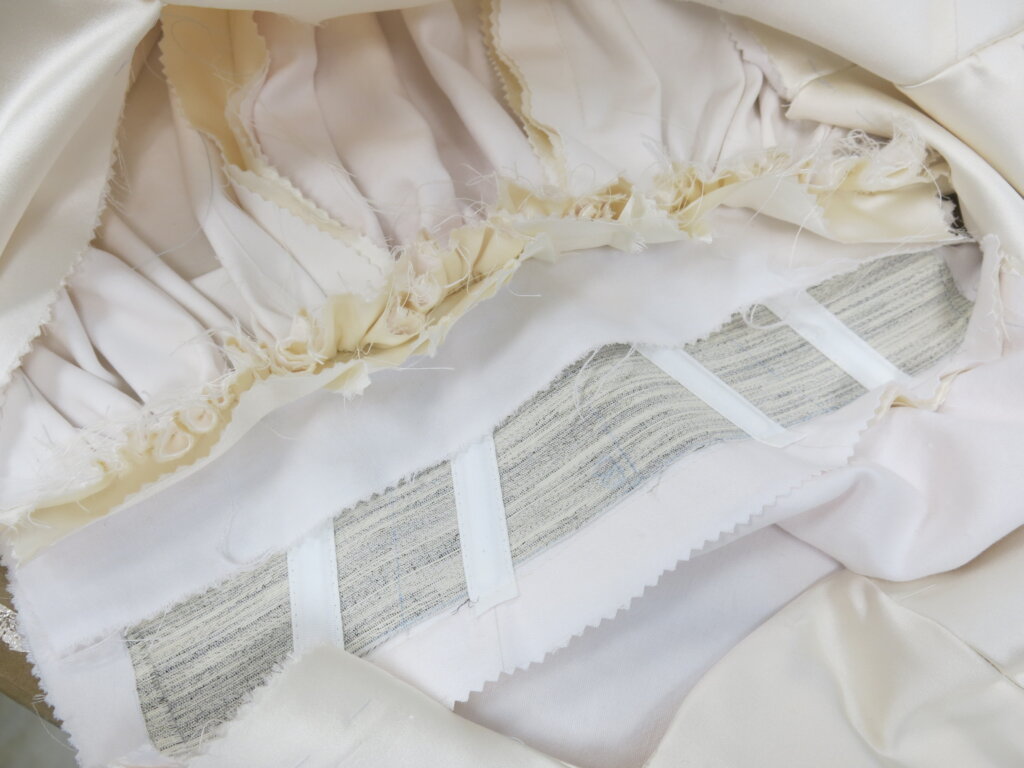
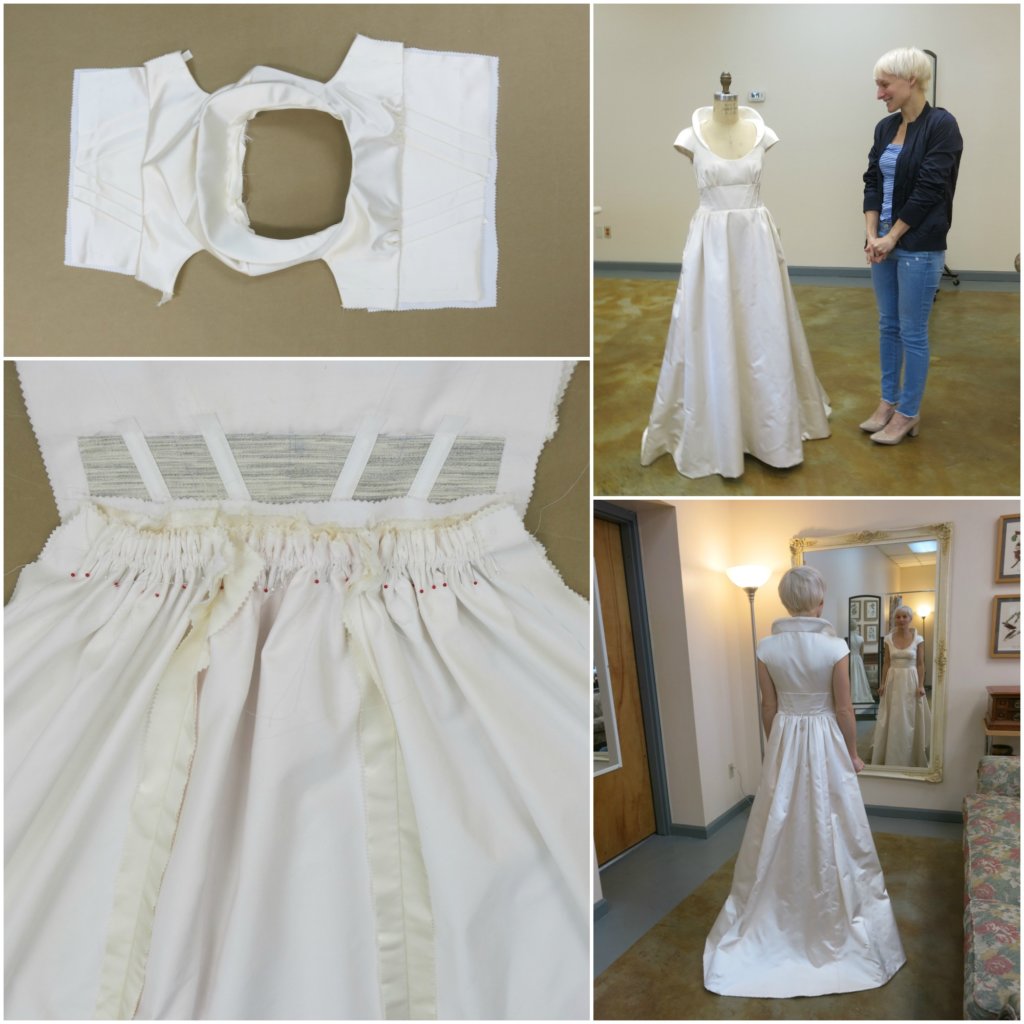
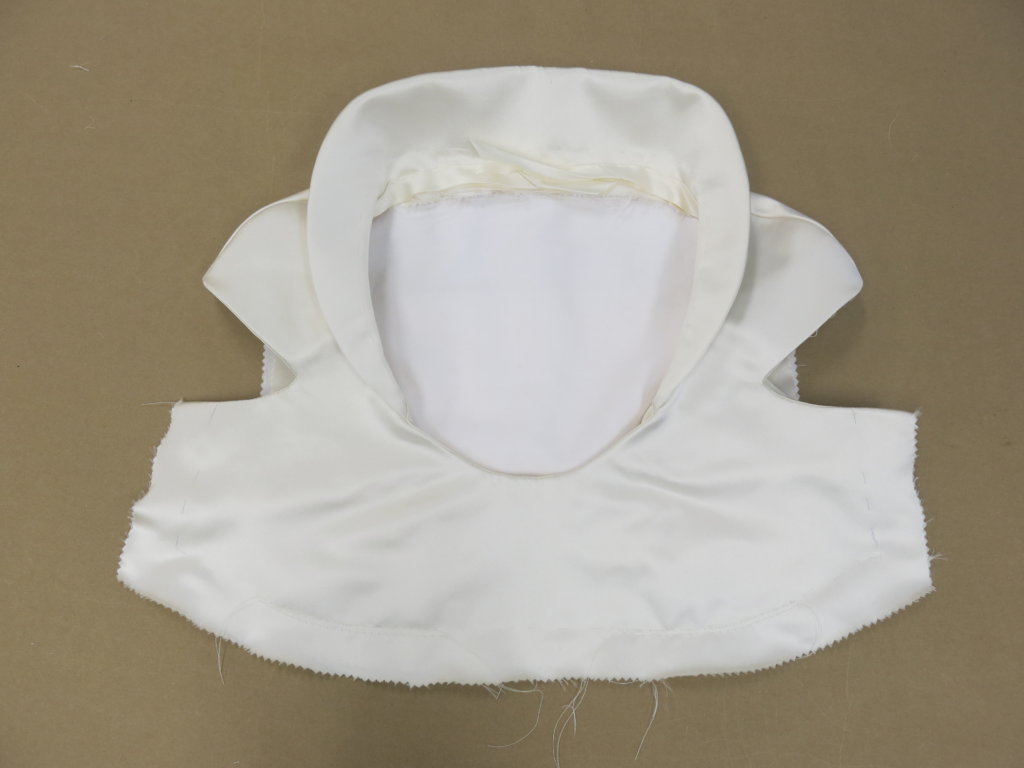









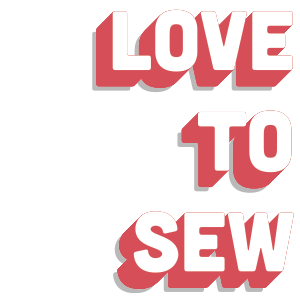




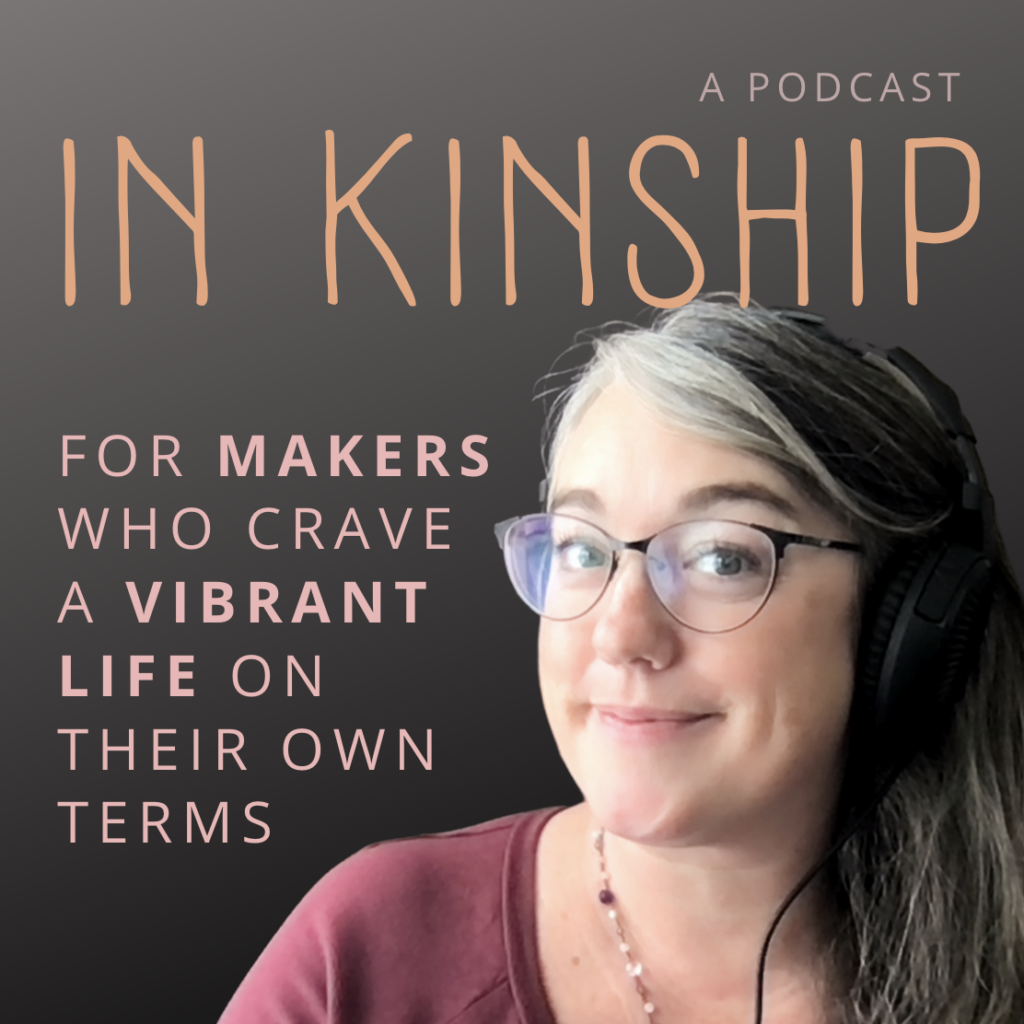


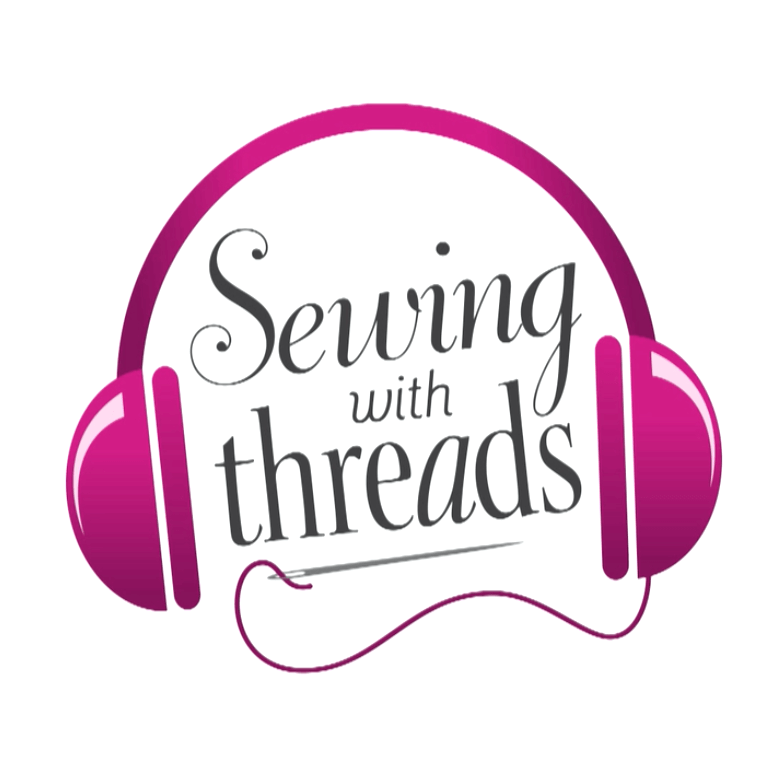
7 Responses
Beautiful & Impeccable!
Hello from Norway
OMG, I have been going through all the post for the construction of this dress and this took my breath away, amazing, thanks for sharing it.
I have a question maybe you could help me, I am going to use a soft organdy for a dress, and I was wondering what type of underlining I could use and lining.
Thanks so much.
Thanks so much Lili!
A soft organdy dress sounds beautiful! I often use organdy as an underlining, so my first instinct would be to underline it with another layer of itself, especially if you want to keep the same feel.
Choosing an underlining fabric really has to do with what you want to get out of it. If you are wanting to keep the hand of the fabric the same but just beef up the weight, you can use the same fabric as the dress for your underlining, or a fabric that feels very similar, like a soft batiste. If you are wanting to make it more crisp, you could underline it with silk organza. If you are wanting to make it less see-through, maybe a soft muslin would work well.
As for lining, I like silk habotai or china silk for really soft garments. It’s really thin though, so depending on how sheer your organdy is, this may be something to consider. Other favorite linings are silk crepe de chine and lightweight cotton silk blends. Cotton batiste could even be a nice lining. It won’t have that slippery feel that we think of when we think of linings, but it could pair well with the organdy. Rayon Bemberg is also often a good choice if you really want that slippery feel.
Good luck on your dress! Let me know how it shapes up and what you decide to use!
Hello again
I tried to reply but it didn’t work, so I am making another comment. First THANKS SO MUCH FOR ANSWERING ME. My biggest concern is the bodice, it is princesses seam style, so that means is fitted. I don’t want to use boning. So I want the princesses seam to be not so weak, I want it to be sturdy, but comfortable. That’s why I have problems to decide what to use as underlining, I was thinking between cotton muslin or flannel, but I am not sure.
Thanks so much for any help or advise.
Those sound like great choices! Muslin comes in all different weights, so you could find one that has the feel you are looking for or flannel will keep it soft, sturdy, and warm. And remember, you don’t have to underline every part of the garment with the same fabric. You might underline the bodice pieces with something sturdy and the skirt pieces with something more fluid (or not at all!)
You sound like you are on the right track so my advice is to experiment on some samples. It’s a great way to learn! Good luck!
Nice work! I have 2″ stiff horsehair and make costume gowns with just a 12 inch train but when I put the dress on the back stands up and it looks like I’m standing in a ring? I figure I can glue weights to the underside but was wondering if you could offer any insight on what I’m doing wrong or how to keep the back laying flat while the front still has body enough for me not to trip over… thanks so much!
Yes! Most horsehair 2″ or wider will come with a string at the top. Place the edge without the string flat along the hem. This will make the top edge bubble a bit because it has moved into a smaller part of the garment. Pull the string as needed at the top to cinch the top edge smaller than the bottom so that everything will lie flat with the garment before stitching it in place. (Also I rarely use “stiff” horsehair, so maybe your horsehair is too stiff for your fabric. The softer stuff almost always works for the fabrics I’m using.) Good luck!